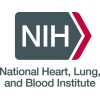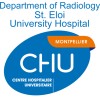
B-Receptor Signaling in Cardiomyopathy
CarcinomasAmyloidosis37 moreWe hope to determine the importance of different genes (including B receptors) in anthracycline-induced cardiomyopathy. This has important benefits to patients exposed to anthracyclines, as this could help determine whether certain individuals have increased susceptibility to cardiac injury.

A Study Comparing the Sensed R Wave in Bipolar and Extended Bipolar Configurations
Ischemic and Nonischemic CardiomyopathyWith Primary and Secondary Implant IndicationsThe PropR study will evaluate sensing during ventricular fibrillation (VF) in both bipolar and extended bipolar configurations, in order to evaluate if both can be used interchangeably in caring for patients. In addition, follow up evaluation of R wave amplitude over time would allow us to determine whether one configuration is more likely to be associated with change. This understanding would be important in selecting the proper configuration at the time of implant.

Effects of Highly Active Anti-Retroviral Therapy on Cardiovascular Health in Infants of HIV-Infected...
Cardiovascular DiseasesHeart Diseases4 moreThis study will determine the impact of highly active antiretroviral therapy (HAART) on the developing cardiovascular system, the evolution of HAART-associated cardiovascular changes over time, and the association between cardiovascular measurements with HAART exposure.

Pilot Study to Assess the Proteome in Human Atrial Tissue
DiabetesCardiomyopathyThe concept of diabetic cardiomyopathy was initially defined more than 30 years ago, as cardiac failure in diabetic subjects in the absence of underlying coronary artery disease. Diabetes is also thought to contribute to earlier stage cardiac systolic dysfunction and/or to isolated diastolic dysfunction, in excess of underlying coronary artery disease and hypertension. More globally, it is recognized that subjects with type 2 diabetes have more extensive cardiovascular disease and a worse outcome for a similar level of disease than non-diabetic subjects. Despite this epidemiological evidence, the biological programming underpinning the myriad presentations of the diabetic heart' are poorly characterized in humans. Proteomics has emerged as an unbiased technology that enables the measurement of large numbers of steady-state protein levels. The potential to identify a diabetes associated proteomic signature in the heart would be a novel approach to identify putative biological programs altered by the diabetic state. A portion of the right atrial appendage is removed to insert the cardiac bypass machine cannula in certain cardiothoracic procedures. This tissue is usually discarded, however, we propose that it could be employed to examine whether otherwise similar subjects with and without diabetes have distinct atrial proteomic signatures. This pilot study may provide insight into potential biological pathways that orchestrate the worse cardiac prognosis in type 2 diabetic versus non diabetic control subjects.

Growth Hormone Deficiency in Chronic Heart Failure: an Observational Study
Ischemic Heart DiseaseCardiomyopathy2 moreAim of this study is to define the possible detrimental effect of a lack of growth hormone, on the well-being and life expectation of patients affected by heart failure.

AIDS-Associated Cardiomyopathy
Acquired Immunodeficiency SyndromeHeart Diseases2 moreTo define the incidence and prevalence of AIDS-associated cardiomyopathy. Also, to conduct immunopathology and serologic studies in endomyocardial biopsies and autopsy tissues.

HIV-Associated Heart Disease
Cardiovascular DiseasesHeart Diseases3 moreTo develop natural history data regarding the incidence, clinical course, prognosis, and effects of treatment with anti-viral and immunosuppressive agents on HIV-associated heart disease. A second part of the study evaluated a number of possible mechanisms underlying the development of HIV heart disease.

Modeling and Pharmacological Targeting of Genetic Cardiomyopathy in Children Via Cardiomyocytes...
CardiomyopathyFamilialInterventional, cross-sectional biomedical study of children with genetic cardiomyopathy and healthy children. The aim is to generate, via induced human pluripotent stem cells (hiPSC), "patient-specific" cardiomyocytes (CMs) (hiPSC-CMs) to study the molecular mechanisms of cardiomyopathies of genetic origin.

Towards Understanding the Phenotype of Cardiovascular Disease in CKD - TRUE-Type-CKD Study
Heart FailureCardiomyopathies3 morePremature cardiovascular disease (CVD) is the leading cause of death in patients with kidney disease (CKD). Excessive cardiac mortality is thought to be secondary to non-atherosclerotic processes, with left ventricular (LV) hypertrophy (LVH) and remodelling being the predominant phenotypical features. Along with other risk factors, subclinical ischaemia and haemodynamic perturbations associated with haemodialysis (HD) are thought to contribute to the ultimate development of LV systolic and diastolic dysfunction. The development of these adverse features reflects a specific cardiomyopathy due to CKD and subsequently, to uraemia. Patients receiving hemodialysis (HD) have a higher incidence rate of heart failure (predominantly with preserved ejection fraction), with phenotypically eccentric hypertrophic remodelling, systolic and diastolic dysfunction as well as high rate of interstitial myocardial fibrosis. Detection and ultimately reversal of the development of this CKD-related cardiomyopathy are important goals for improving the CVD, morbidity and mortality of CKD patients.The objectives of this study are, firstly, to investigate the complex myocardial phenotype in patients with various stages of CKD, secondly, to relate the CMR-measures to outcome, and thirdly, to be able to estimate the effects of chronic uremia/hypervolemia. Deciphering the predominant driver of remodelling on an individual level may help to personalise anti-remodelling strategies. Native T1 and T2 mapping imaging provide non-invasive imaging tools to detect myocardial fibrosis and oedema, respectively. Prognostic associations of these measures may clarify the relative prevalence of adverse phenotype and their relative contribution to adverse events and poor outcome. The role of chronic water retention and uraemia may be associated with interstitial myocardial oedema promoting further the remodelling process.

The SoundScar Study The SOUNDSCAR Study
Ventricular TachycardiaIschemic CardiomyopathyProspective, Non-randomized, Single-arm Study to assess the accuracy of intracardiac echocardiography (ICE) for characterization of arrhythmogenic substrate in patients with ischaemic cardiomyopathy undergoing ventricular tachycardia (VT) ablation
